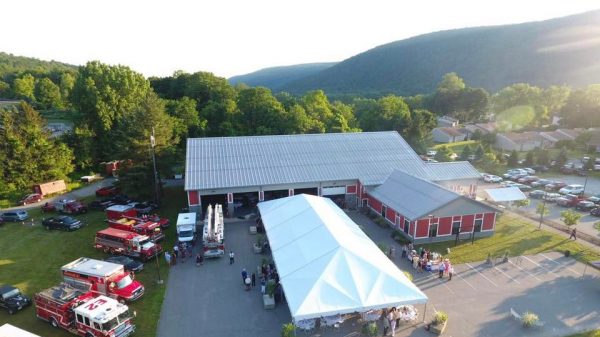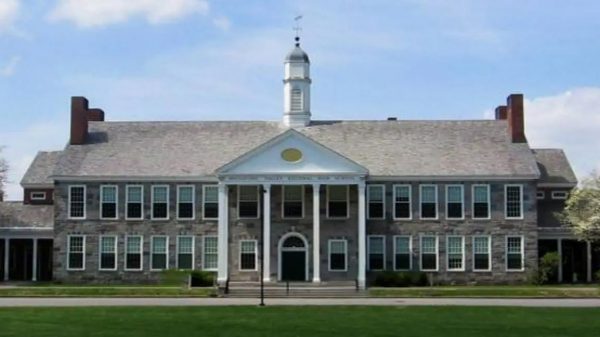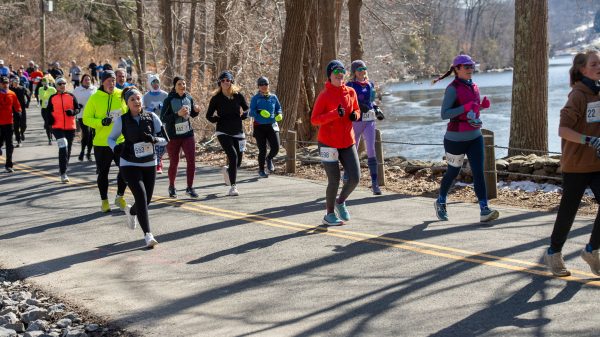KENT—On Tuesday, Jan. 7, Kent voters will decide whether to establish a new ordinance allowing the installation and operation of “automated traffic enforcement safety devices” to record the speed of passing cars and to issue tickets for those exceeding the speed limit by 10 or more miles per hour.

A referendum on the controversial topic will be held at Kent Town Hall, 41 Kent Green Blvd., from 6 a.m. to 8 p.m.
The referendum call asks residents to decide whether the devices shall be deployed “at school and pedestrian safety zones and at other places approved by the Connecticut Department of Transportation.”
If the measure passes, the DOT would weigh placement of the devices based on speed and traffic data collected last spring.
If the first measure on the referendum is passed, a second question asks whether the town should appropriate $46,296 to purchase two devices. The Board of Finance has okayed a sum up to that amount for the cameras to be taken from the general fund.
“That is the amount that I was quoted by one company,” said First Selectman Marty Lindenmayer. “But it would have to go out to bid and it could cost less, or it could cost more.”
Lindenmayer has championed the use of the devices, which were recently installed in nearby Washington, Conn. Other towns throughout the Northwest Corner are also assessing their use.
In Kent, with busy Route 7 passing through the village center and large number of pedestrian visitors every weekend, speeding vehicles pose an ever-present danger.
A traffic subcommittee recommended that lower speed limits be set, and the state complied in 2023, reducing speeds to 35 miles per hour on the approaches to town and 25 miles per hour in the densely populated village.
The selectmen report seeing dangerous behavior on the part of motorists even after the speed limits were reduced.
The use of speed enforcement cameras is also endorsed by Resident State Trooper Vicky Donohoe, who said at a Nov. 22 informational hearing that she can sit on Route 7 any day and observe cars going over 50 miles per hour.
She said one-third of the ticketed violators live in Kent. Because of speeding on the state routes, Donohoe said there is little time to monitor traffic in other town locations.
Resident Chris Garrity, who lives on North Main Street, said at the hearing that addressing the issue of speeding in Kent is long overdue and the number of speeders is increasing.
Traffic studies conducted by the town earlier this year in several locations on Route 7 near the village center, recorded more than 30,000 instances of drivers exceeding the posted speed limit by more than 10 mph.
Brandon Knox of Dacra Tech, whose company handles the processing of citations, addressed residents at the hearing via Zoom. “There’s a lot of speeding going on in your town. There’s a mass amount of people going way faster than they should.”
Not everyone agrees, however. Residents have taken to the public community Facebook page to post their opinions and to suggest other solutions such as speed bumps and crossing guards. Some have suggested the cameras are a revenue-generating move by the town, and worry the town will be seen as unfriendly to visitors.
Christine Michelini wrote, “Traffic cameras may seem like a straightforward solution to traffic issues, but the point here is that we have minimal instances of traffic issues in this small, tranquil, rural town. That itself reflects the fact that we do not need any traffic cameras.”
She sees the looming shadow of “Big Brother” in the move toward automated traffic control. “Traffic cameras raise questions about privacy, fairness and potential misuse. Once the door is opened for traffic monitoring through cameras, it may be difficult to limit how and where these devices will be used. Many communities that initially implemented a small number of traffic cameras later expanded their use, often without sufficient public input.”
Others see the proposed placement of the cameras in the 35 mile per hour approaches to the town as being ineffective.
“The proposed locations of the speed cameras will not change anything in the center of town,” wrote Crystal Dubray. “I say, this will just open up for the town to add additional cameras on many other roads and it will only get the company selling them and monitoring them rich. … During the crowded weekends you can’t make it through town going the current speed limit and I travel many times a day through the town center.”
Lindenmayer disputes the idea that revenue is a motive for installing cameras. “It is all about safety,” he insisted.
But he is philosophical about the process. “It is up to the town to decide, not me.”




































